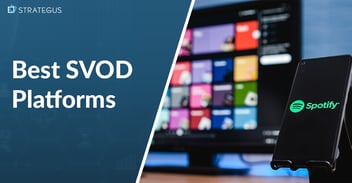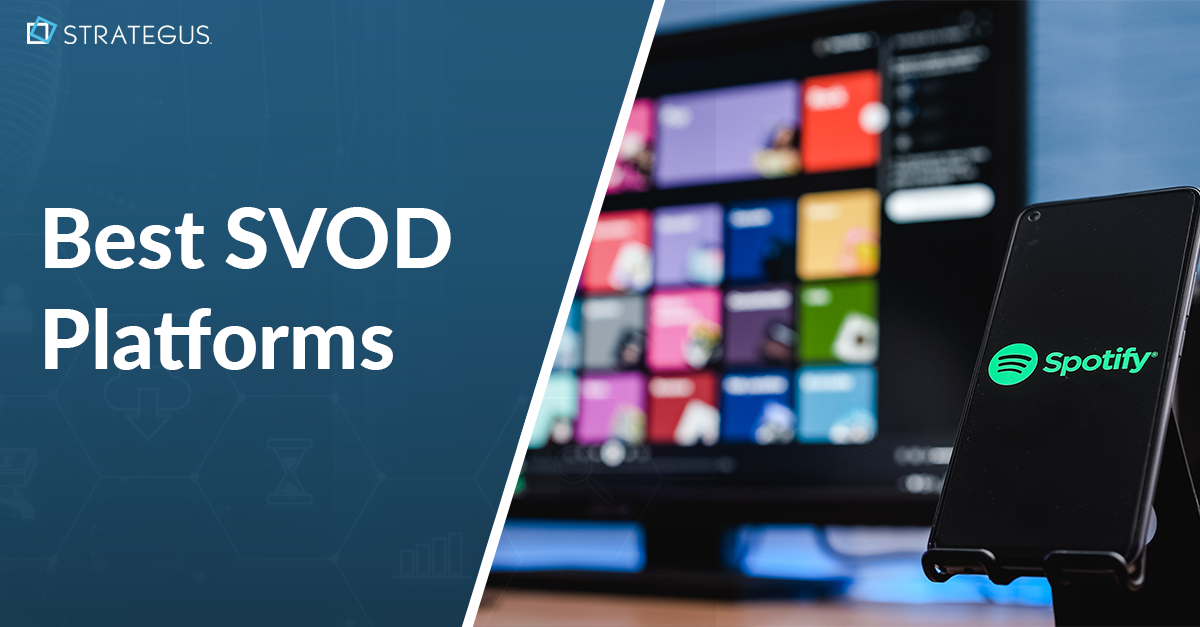- Home
- Strategus Blog
- The Role of CTV in Political Campaign Advertising
The Role of CTV in Political Campaign Advertising
 Andy Dixon
Andy Dixon
4 minutes read

With a new year to celebrate, it's time to get your message heard in preparation for the 2022 midterm elections! However, carefully balancing exposure and messaging so your organization stays top of mind without risking ad fatigue or audience frustration is a difficult task.
Broadcasting your message on traditional television and radio channels is simultaneously too much and not enough. That's why we recommend taking a more nuanced approach through OTT/CTV channels.
More and more audiences use streaming media services throughout large blocks of their day. In fact, according to eMarketer, "In 2022, the number of connected TV users will rise to 204.1 million, which will represent 60.1% of the population."
Not only is this a large block of the voting-age population, but connected TV services give you far more nuanced control over what messages each user is exposed to for maximum effect.
This provides you with an excellent platform to get your core voting audiences familiar with your message and engaged with your candidates from now until Election Day. Read through this guide to learn more about the 2022 political campaign advertising landscape and how to use OTT/CTV to your advantage.
THE 2022 POLITICAL CAMPAIGN ADVERTISING LANDSCAPE
The 2022 political landscape is becoming complicated, and the advertising landscape will be just as complex. Persistent doubt about social media and online messages is a continuing theme that leads to distrust and polarization.
At the same time, repetitive broadcast messages can also introduce boredom, annoyance, and ad fatigue that makes voters reluctant to go to the polls. As a results, advertisers need to carefully navigate crowded channels to grab audience members’ attention while avoiding overexposure.
One trend that has emerged in this landscape is the importance of ad spending. According to Kantar, "Our estimate for the midterm season sits at $7.8 billion for local broadcast, local cable/satellite, radio, digital and OTT."
This is a tremendous amount of spending for a midterm election season, indicating that competition for ad space in desirable time slots will be tough. In that estimate, the most significant spend category is traditional broadcasting, which can reach a vast network of households in any geographic area.
But OTT/CTV spending is still estimated to reach $1.2 billion. Some of the states with the most activity (and therefore the most prominent price tags for purchasing media) will be Pennsylvania, Florida, Arizona, Georgia, and Wisconsin. OTT/CTV channels allow marketers to reach users based on their geographic locations to have the same targeted reach as local broadcasting channels (or better).
OTT and CTV channels also give political marketers more insight into the audience's reception of the ads, ensuing actions, and other factors. The same wisdom that turns consumer marketing into omnichannel experiences is perfectly arranged to let political organizations give voters the same immersive and personalized experience.
WHY OTT/CTV?
According to Kantar's estimates, OTT/CTV advertising sits near the bottom of the primary channels for anticipated 2022 mid-term ad spend. So why should it be a priority for your organization?
In political advertising, even more so than commercial campaigns, you have to be able to justify campaign expenses with accurate results. So, while traditional linear and broadcast television ads may still be the most significant way to get the message across, OTT/CTV plays a critical supporting role. Here's why:
Omnichannel Capabilities
Voters need to hear and see your messages in different contexts to fully absorb the content and stay engaged with your candidate or supported legislation. So, while they might tune out a political ad during the local evening news as they make dinner (especially if they've heard it before), OTT/CTV streaming is different. Viewers will actually see the ad as it plays before the next show in their streaming queue.
After this initial exposure, omnichannel retargeting efforts put your content in front of your target audience in multiple locations — desktops, laptops, smartphones, and more. Building all these connections keeps your message top of mind. It also familiarizes your audience with your candidate's written and spoken name.
Omnichannel capabilities are more than just displaying ads! OTT/CTV ads also provide you with in-depth analytics about how audiences respond to advertisements so you can control their experience. For example, rather than risking ad fatigue, you can set your messages to be played a certain number of times per day or week, and you can also determine which ads audiences should watch sequentially.
Deliver Engaging Content
Ads on CTV and OTT channels haven't faced the strict regulations and policing that more 'traditional' digital media are dealing with. This means you can organize your viewers based on their demographics (such as their location, age, and income), interests, and political leanings gleaned through those interests.
Then, you can match those segmented groups with content you know will engage those audience groups. This cuts through the waste of spending ad money on a broad audience base or sending out misaligned messages. Instead, you send precisely the right message to the right person — at the right time.
Real-Time Optimization
It's also not a one-way connection. Once you send those ads to your audience, you can assess the real-time results and make immediate changes to your strategy based on the feedback you receive. This allows for rapid A/B testing, the ability to switch viewers to another campaign, and much more!
You can purchase media in real-time instead of competing and bidding far in advance, like with traditional broadcasts. However, even in an advertising environment where spending is skyrocketing, it's essential to make sure your advertising dollars generate the best political ROAS possible.
PARTNER WITH STRATEGUS FOR STRATEGIC POLITICAL AD CAMPAIGNS
If this is the first time you're adding CTV and OTT to your political advertising strategies, you're not alone! Most previous analyses didn't even look at CTV/OTT advertising possibilities in 2018!
But don't let that uncertainty stop you from reaching new audiences and getting them to the polls with your messages on their mind. Strategus is here to help you craft engaging campaigns and reach your target voters. Contact us today to learn more!

Andy Dixon is a seasoned Content Writing Specialist at Strategus, renowned for his expertise in creating engaging and impactful digital content. With over a decade of experience in content creation, Andy has honed his skills in a variety of niches, ranging from technology and marketing to education.
Strategus is a managed services connected TV(CTV) advertising agency with over 60,000+ campaigns delivered. Find out how our experts can extend your team and drive the result that matter most.
Talk to an Expert
Seeking a Custom CTV Strategy That Delivers?
What to read next

Best SVOD Platforms for Advertisers
The streaming wars have a new battlefront, and this time, it's all about your ad budget. Just a few years ago, SVOD meant "no commercials." Now, it...
12 minutes read

Third-Party Data Targeting for CTV: Benefits & Tactics
Third-party data. It’s a term that’s thrown around, and yet few take the time to detail its pros and cons — much less strategies for using...
7 minutes read

First-Party Data Targeting: Benefits and Tactics for CTV Advertising
First-party data is the information that companies collect directly from their customers rather than through intermediaries. Advertisers use this...
10 minutes read

Foot-Traffic Attribution: Tying Ad Impressions to In-Store Visits
The marketing funnel has changed. Today’s shoppers often begin researching products from the comfort of their homes and don’t set foot into a store...
8 minutes read















